With easy-to-grow and notable elliptical grayish-green, velvety leaves that are soft to the touch, there’s no wonder why the fancy lambs ear (Stachys byzantina) keeps capturing many gardeners’ hearts. However, if you’re living in an area where lambs ear is elusive or just in search of some alternatives, we’ve gathered the best lambs ear look-alike that is no less interesting. Check them out below!
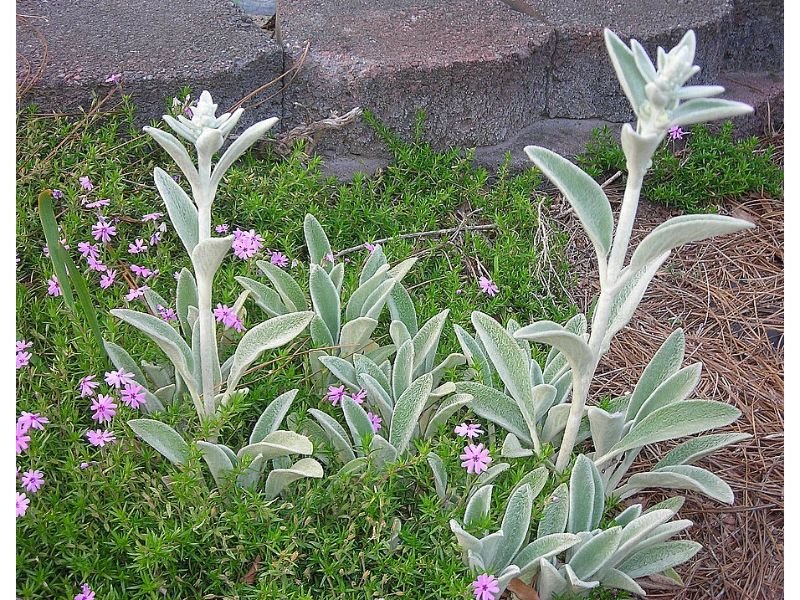
Table of Contents
Lambs Ear Plant Look Alike That Are Valuable to Cultivate
Common Mullein (Verbascum thapsus)
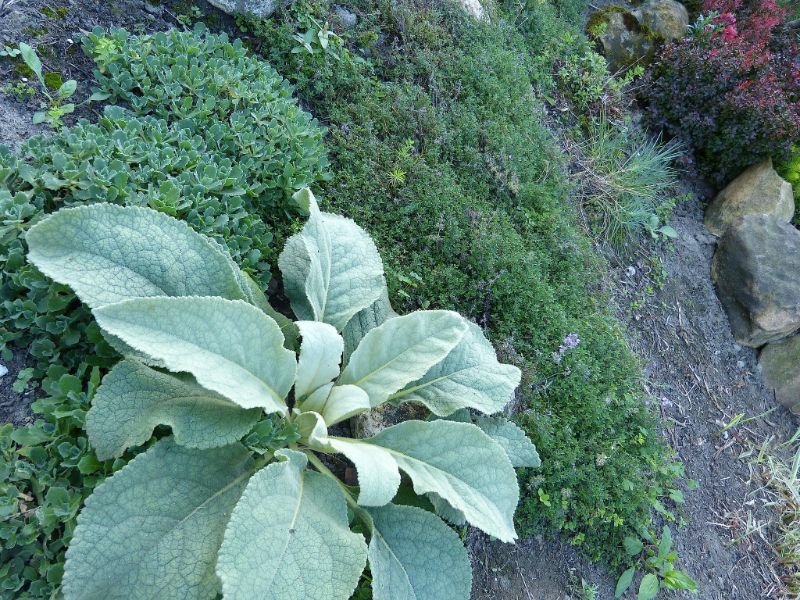
Zones: 3 to 9
Sun: Bright, direct sun
Soil: Nutrient-rich, permeable
Watering: Regular watering
Blooms Color: Bright yellow
Common mullein is not only a lambs ear look alike in terms of appearance, this biennial also shares almost-identical growing requirements with its botanical twin. Their bright-colored blossoms attract many important pollinators, such as bees and butterflies. However, due to their adaptability to various environments and potential to spread quickly, common mullein might be considered an invasive species in some regions.
Silver Sage (Salvia argentea)
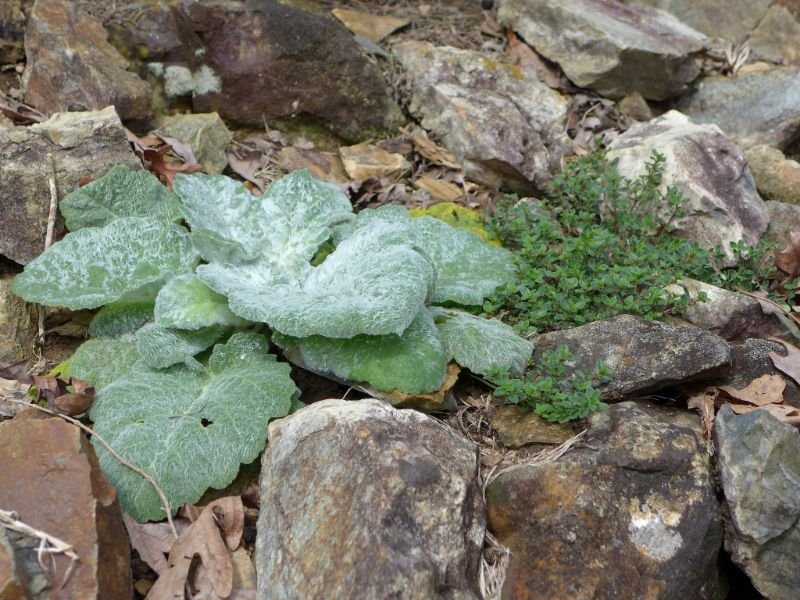
Zones: 5 to 8
Sun: Bright, full sun
Soil: Porous, fertile
Watering: Adequate watering
Blooms Color: White, pale pink
Aside from the difference in foliage arrangement and blooming shape and color, silver sage is worthy to be nicknamed as the lambs ear plant look alike due to the equal eye-catching look they serve. Similar to lambs ear, silver sage also has soft, velvety grayish-green leaves, and what’s more–they have a tendency to self-sow, which means this plant can propagate itself without human intervention!
Dusty Miller (Jacobaea maritima)
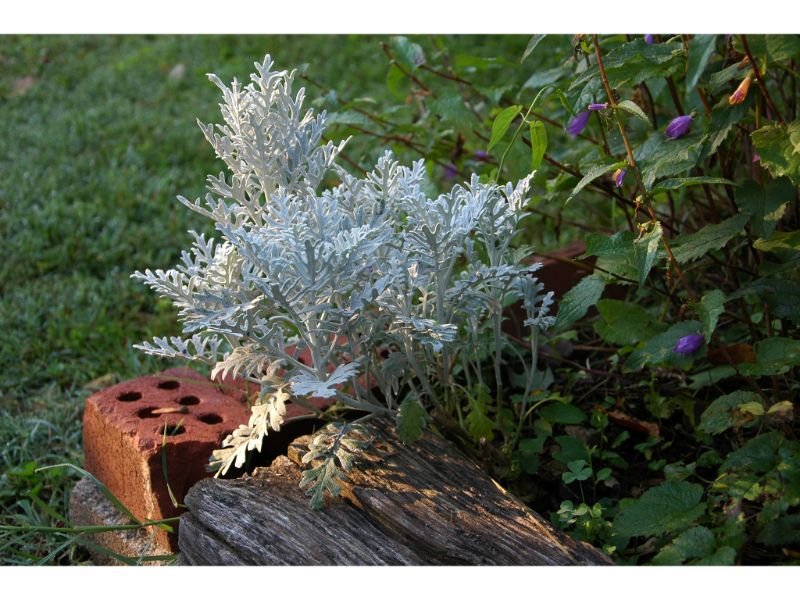
Zones: 7 to 10
Sun: Dappled shade, part shade
Soil: Fast-draining
Watering: Consistent watering, slightly dry
Blooms Color: Bright golden yellow
With distinct bright flowers that create a huge contrast with its silverish-gray foliage, dusty miller is perfect for gardeners who also love that aesthetic black-and-white photography look. This native to the Mediterranean region is highly drought tolerant and can withstand high temperatures, making it the ultimate hassle-free addition to your nursery.
Licorice Plant (Helichrysum petiolare)
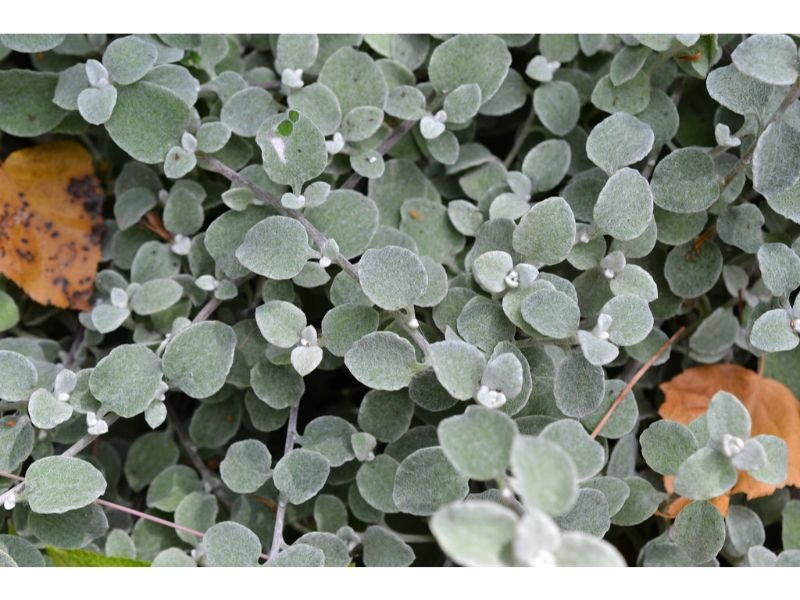
Zones: 9 to 10
Sun: Direct sun, semi-shade
Soil: Loamy, sandy, permeable
Watering: Consistent watering
Blooms Color: White, pale yellow
The aromatic aroma of the licorice plant is suitable for those who are seeking good-smelling plants. Known for being used as flavoring in various foods and beverages, this lambs ear look-alike is highly valued for its spectacular foliage and trailing growth habit. This flowering plant also benefits from regular pruning sessions to maintain its growth or to encourage more growth and is also generally not difficult to propagate using stem cuttings.
Common Sage (Salvia officinalis)
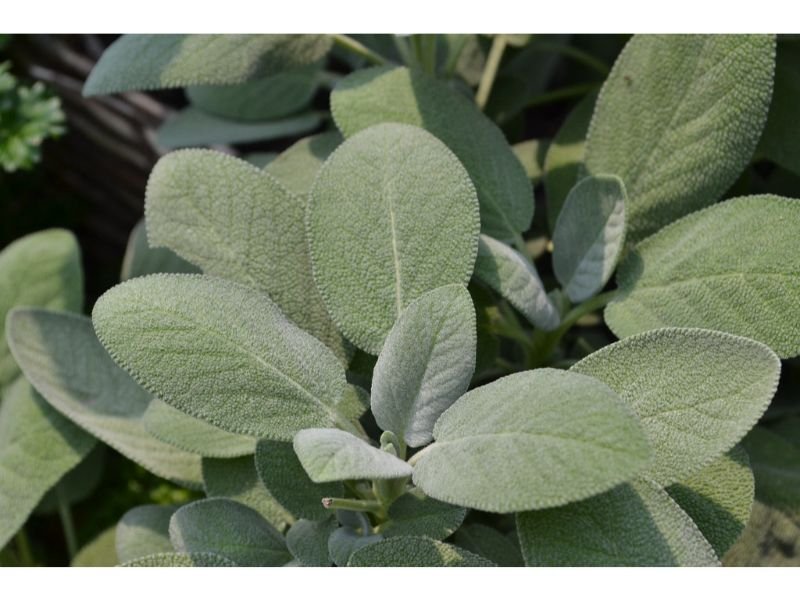
Zones: 4 to 8
Sun: Bright to filtered sunlight
Soil: Somewhat fertile, well-drained
Watering: Adequate watering
Blooms Color: Pale lavender, pale pink, bluish-lavender
Also nicknamed culinary sage, common sage shares a similar leaf shape and color with lambs ear but is less velvety and ‘hairy’. Same to the licorice plant, this lambs ear plant look-alike also has a strong and pleasant aroma that can be described as earthy with herbaceous and minty hints. In various traditions and cultures, the common sage is believed as the flower that symbolizes wisdom, purification, and protection against evil.
Woolly Thyme (Thymus pseudolanuginosus)
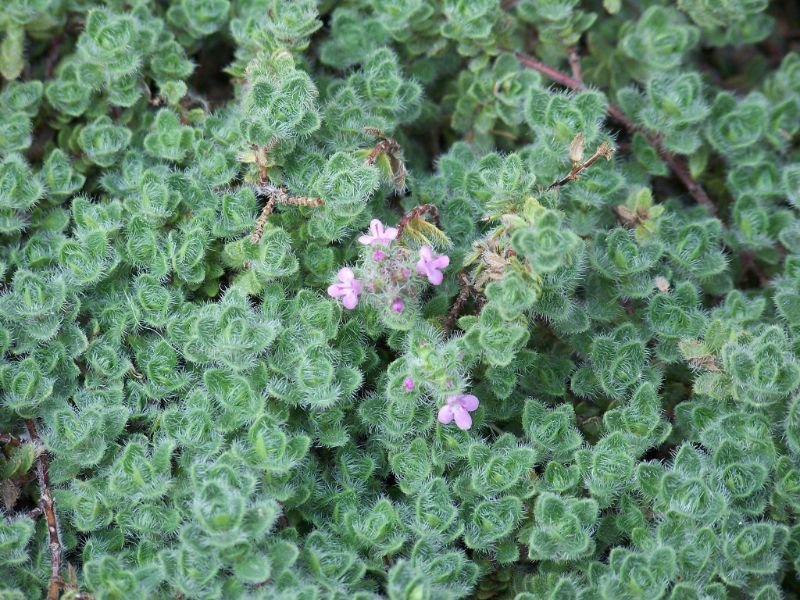
Zones: 5 to 8
Sun: Bright, direct light
Soil: Porous, rich loam, sandy
Watering: Regular watering
Blooms Color: Pale lavender-pink
If you’re in search of lambs ear look-alike that can be maximized as a ground-covering plant, woolly thyme is then the answer you’ve been looking for–thanks to the plant’s spreading growth habit. Indistinguishable from lambs ear, woolly thyme is also considered a low-maintenance plant, especially once they’re established. Due to their compact size, woolly thyme wouldn’t only make great ground covers, but also as container plantings and pop color in rock gardens.
Walker’s Low Catmint (Nepeta x faassenii ‘Walker’s Low’)

Zones: 4 to 8
Sun: Direct to part shade
Soil: Rich loam, sandy, porous
Watering: Consistent watering
Blooms Color: Bluish-lavender
Often confused with catnip, Walker’s low catmint is not as commonly used as catnip to attract your furry companion’s attention. And despite its name, Walker’s low catmint is not considered a compact-sized plant, as they can grow up to 30 inches (76 centimeters) tall and a little bit more! Like any other catmint varieties, this lambs ear plant look-alike is blessed with aromatic leaves and their blooms are highly attractive to pollinators.
Snow-in-summer (Cerastium tomentosum)
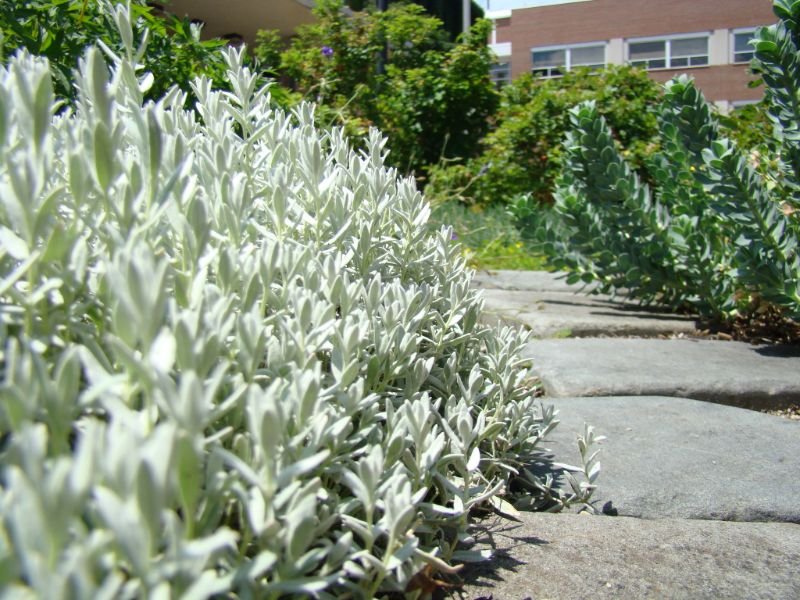
Zones: 3 to 7
Sun: Bright, direct sun
Soil: Porous, fast-draining
Watering: Adequate watering, somewhat dry
Blooms Color: White
Comparable to lambs ear, snow-in-summer features velvety, ‘hairy’, and grayish-green leaves. Snow-in-summer also shares the same blooming season with lambs ear, which typically falls in late spring through early summer, making this plant a perfect fit for each other. This native to Italy can be categorized as hassle-free and generally winter-hardy, however, they can self-seed and spread fairly quickly in favorable conditions, making this plant have that invasive potential.
Powis Castle Artemisia (Artemisia ‘Powis Castle’)

Zones: 6 to 9
Sun: Bright, direct light
Soil: Drainable, poor to somewhat humus-rich
Watering: Regular watering
Blooms Color: Pale yellowish-golden
In addition to its finely divided, soft, and velvety silvery-gray foliage, this lambs ear look-alike is also favored for its ornamental value by adding textual interest and an inviting atmosphere to your garden. Powis Castle, where this plant was first discovered, is a historical site that dates back centuries and has a diverse collection of plants. Powis Castle artemisia is not considered a compact-sized plant, as they can grow up to 3 feet (90 centimeters) and spread to as wide as 5 feet (150 centimeters).
Edelweiss (Leontopodium nivale)

Zones: 4 to 7
Sun: Full to filtered light
Soil: Fast-draining, porous, permeable
Watering: Adequate watering, slightly dry
Blooms Color: White
Although edelweiss is not as easy to find as lambs ear, their ability to adapt to the natural harsh conditions of the Alps makes this flower rather easy to cultivate and tolerant to poor soil conditions. The foliage of this lambs ear look alike packed in dense white ‘hair’, giving it a woolly appearance that matches well with its snowy-white blooms. The name of this plant is derived from the German words ‘edel’, which means noble, and ‘weiss’, which refers to its white appearance.
Are There Medicinal Properties for Lambs Ear and Its Look-Alikes?
A large number of Stachys varieties, including lambs ear, are known as herbal plants to treat various illnesses like gastrointestinal disorders, skin inflammation, asthma, and even stress. But what about these lambs ear look-alike plants? The good news is, most of these plants also have their medicinal uses. Common mullein is often used to make herbal remedies for respiratory problems. Silver sage, on the other side, is mainly used to treat wounds and soothe skin. Edelweiss, despite being more favored for its aesthetic, also has a medicinal history of being used to treat stomach issues and various skin conditions.
Why Do Lambs Ear and Some of Its Look-Alikes Have ‘Hairy’ Leaves?
The fuzzy, smooth ‘hairs’ that give lambs ear and lambs ear look-alike plants the silverish-gray color and velvety feeling are not merely a decoration. In fact, these ‘hairs’ are the plants’ unique way to survive and adapt to their original environments. First, the ‘hairs’ helps these plants conserve water by reducing evaporation. It also acts as a natural sunscreen by reflecting or diffusing sunlight. These bizarre ‘hairy’ and velvety foliage also serves as the plant’s defense mechanism against herbivores, making the animals lose the appetite to munch on the leaves.
Final Overview: What Are Some Lambs Ear Look Alike Plants?
Common mullein, silver sage, woolly thyme, and snow-in-summer are just a few examples of plants that can be lambs ear’s close cousins. Although some of these plants might not have the exact appearance as lambs ear, they do share similar growing requirements, blooming season, size, and growth habit–making them absolutely can be thrived as lambs ear alternatives or companion plants.

New author in the hood. Loves gardening and flowers are my spirit animals (yes I know they are not animals but I insist). I will be covering most of the flowers’ topics here and occasionally random though as well.






